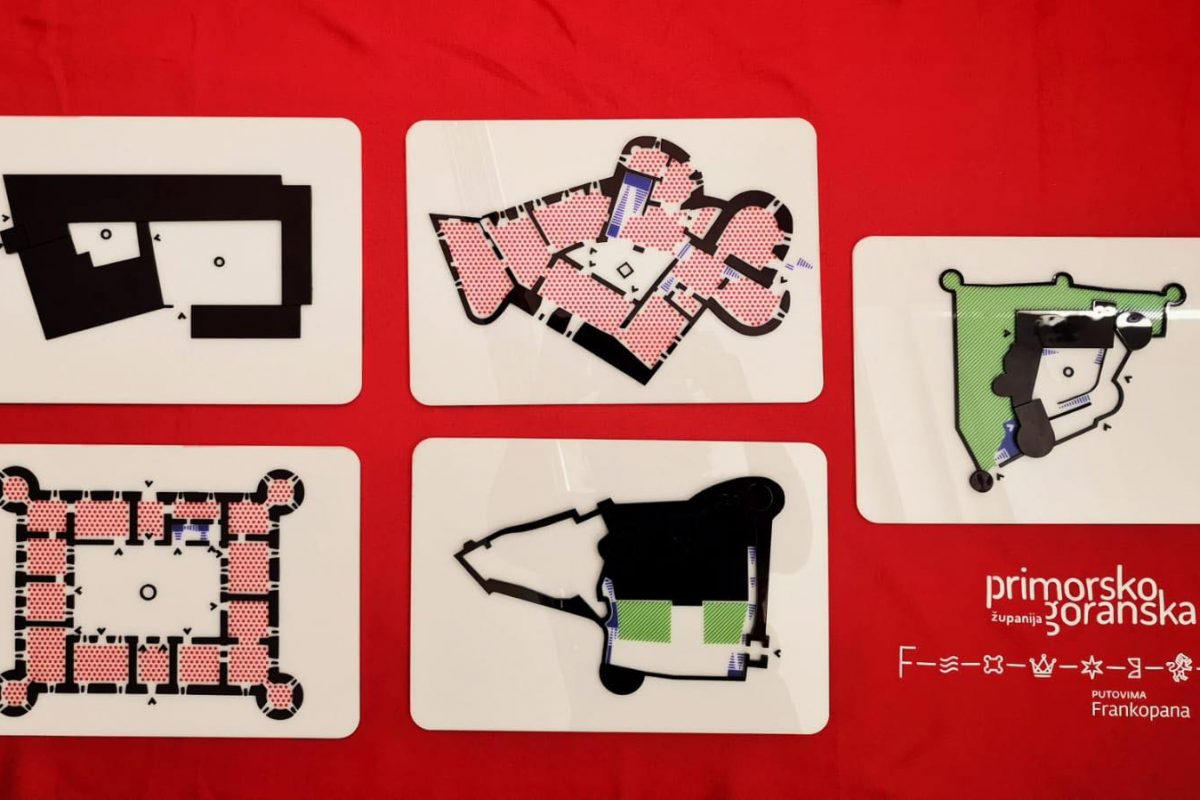There are a number of situations in which a blind or partially sighted person can be self-sufficient and independent. One of the many examples is the use of Braille inscriptions and markings, which can be placed on almost all surfaces.
As part of our Cultural-Tourist Route The Routes of the Frankopans, in order to bring our project and rich cultural heritage closer to the visually impaired, at the locations where our Interpretation Centres are located, we used this opportunity to adapt texts interpreting the theme of each Centre to the visually impaired and blind people. The texts are written in Braille. The sense of touch allows blind people to read the publication published on that letter. Today, many blind and partially sighted people have at their disposal various aids that enable them to continue to acquire new knowledge and enrich their lives with new knowledge. In our Interpretation Centres, in addition to reading Braille publications, they can also listen to audio recordings of Frankopan themed picture books, because each Interpretation Centre has its own “sound picture book”, and each Centre has a manual magnifier.
In this beautiful story, it is certainly important to mention the excellent cooperation with the UP2DATE Center and the Association of the Blind of the Primorje-Gorski Kotar County. The valuable project “Let’s Touch the Routes of the Frankopans”, which involved 100 people (blind, visually impaired and their sighted companions), was successfully completed and lasted for a year. The project was designed at the UP2DATE Center, which was implemented in partnership with the Association of the Blind of Primorje-Gorski Kotar County, with the financial support of the Ministry of Culture and Media of the Republic of Croatia.
For the implementation of the project, relief depictions of five famous sites visited by blind people (properties of the Frankopan family: Grobnik Castle, Trsat Castle, Old Town of the Zrinskis in Kraljevica, Nova Kraljevica Castle and Castle in Bakar) and tactile postcards with the coat of arms of the Frankopan family were made. It is precisely these reliefs that the Cultural-Tourist Route The Routes of the Frankopans has received for use and are located in our Interpretation Centres. Blind people visited these locations with expert guidance and what is visual to others, they experienced with a sense of touch.
With this approach to cultural heritage, we additionally educate visually impaired people, include them in the regular life of the community, bring heritage closer to those to whom it is inaccessible, which raises the level of their general culture, equalizes opportunities and raises the quality of life.
Visually impaired people can finally experience the sights of the cities they visit, experience floor plans, shapes, facades, domes, towers, etc., understand the relationships between the displayed elements, which is not available due to the size of the site or object. With this addition the Cultural-Tourist Route The Routes of the Frankopans becomes even more open and valuable!


















